Welcome back to whatever this is.
Last week, we banded together as I rambled for several pages over Final Fantasy XVI‘s lead development team and then turned an eye toward what we’ve seen of the game’s world — the vast, dual-continent landmass called Valisthea. We all had lots of fun, which is why you’ve clicked on this week’s article, and why I didn’t flake on writing it.
Our focus now shifts toward a more thorough look at the recent State of Play trailer that inspired all this discourse in the first place. But it isn’t enough to just look at the thing in totality; there’s a heavy enough mixture of cutscenes and gameplay stuffed into those three-odd minutes to warrant separate glances. We’ll talk more about the gameplay side of the equation next week, except as it constitutes the story, characters, and societies of Valisthea — because those are our focal points for today.
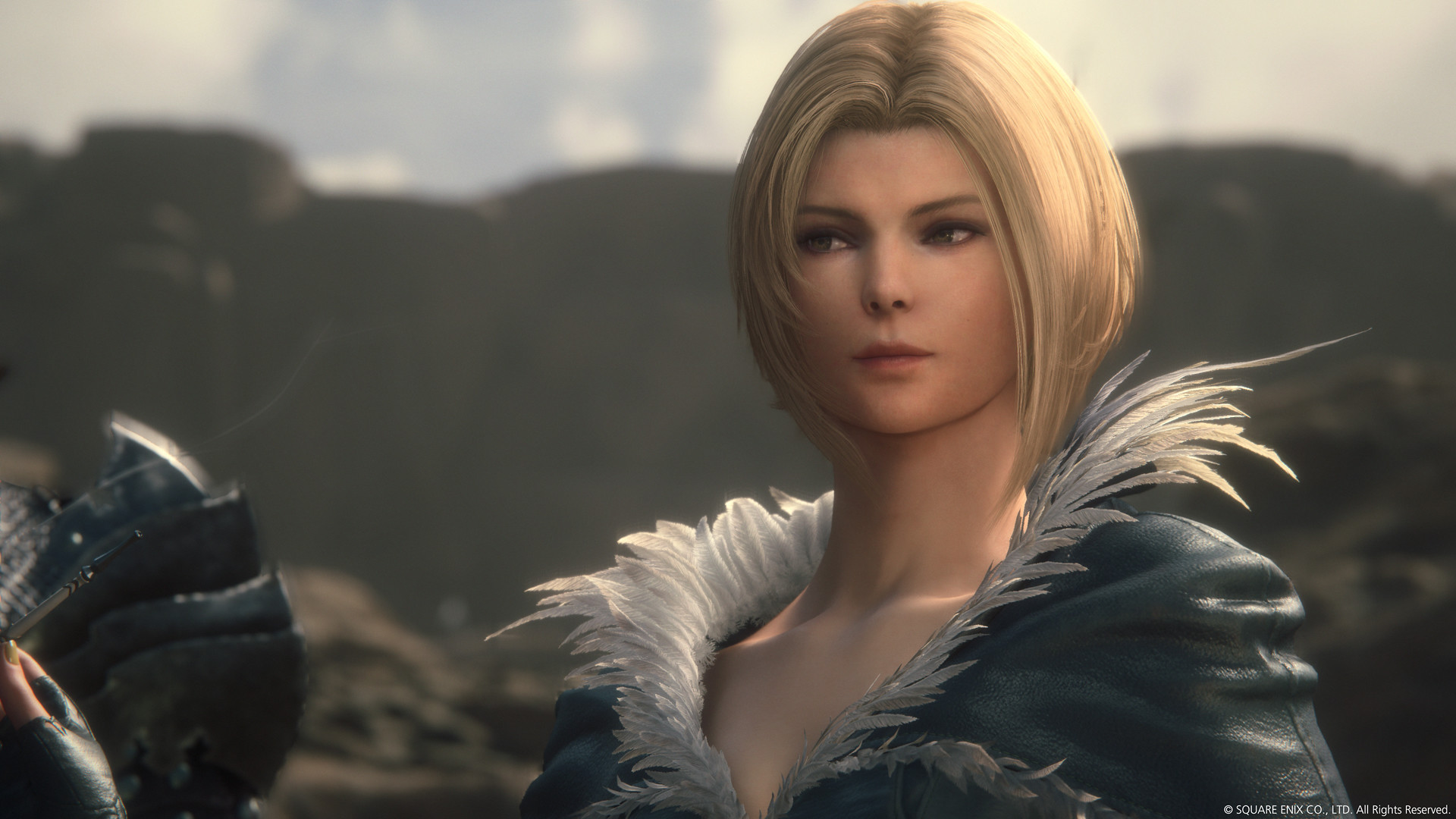
Benedikta? I Hardly Know Her
I’d like to begin by giving some attention to a pair of pivotal characters whose identities have only just been revealed to us. There’s Benedikta Harman, a woman who was technically introduced in 2020’s announcement trailer but lacked a name at the time, and then there’s Hugo Kupka, a man who was… also technically introduced in 2020’s announcement trailer, except he was about a mile tall and made of stone at the time. (And we didn’t know his name at the time.)
Both Benedikta and Hugo are Dominants, meaning they’re hosts (so to speak) for powerful Eikons whose abilities in battle can seal the fates of entire nations. Benedikta is the Eikon of Garuda, a recurring Wind-elemental monster in the Final Fantasy series who was elevated to summon status in FFXI, reprising that role in XIV and a XIV-based crossover with XV. Titan needs little introduction — Hugo’s Eikon of Earth has been an iconic summon since 1989’s Final Fantasy III.
Let’s take a look at their character descriptions from the official website:
Having emerged from the storm of youth coldhearted and ruthless, Benedikta Harman—Dominant of the Eikon Garuda, Warden of the Wind—turned her talent for swordplay and subterfuge into a command of Waloed’s elite intelligencers. It is on a mission to find the elusive second Eikon of Fire that she crosses paths with a like-minded Clive and is forced to face her past.
Permanent Economic Adviser Hugo Kupka‘s meteoric rise to prominence was sudden, if not unexpected. Once a nameless foot soldier in the Republican Army, his awakening as Dominant of the Eikon Titan thrust him to the forefront of Dhalmekian politics. It was here he used his newfound position as the most powerful man in the republic to exert influence over both the nation’s armies and its policy making—amassing a personal fortune in the process. Yet while it is said that a man who has everything wants for nothing, Benedikta Harman will teach him money and power are far from all the world has to offer.
This tells us a great deal about Benedikta and Hugo, and repeating the details you’ve just read would be pointless at best. But! There’s a certain aspect to each passage that catches my eye. Namely, they both conclude by establishing the subject character’s relationship with a different character.
In Hugo’s case, that character is Benedikta. Given the way things are worded, I hypothesize the genuine titan of a man (I apologize for nothing) has a thing for the spy from Waloed. In a politically-charged tale from the creative minds of Naoki Yoshida and his team, that is guaranteed trouble.
Benedikta’s passage, on the other hand, concerns our lead protagonist, Clive Rosfield. In the 2020 trailer, her words and posture suggested Benedikta was either a villain or, at best, an antihero. Indeed, her transformation into Garuda draws out an unambiguously wicked side that only furthers that foundation. But between a few of the more sympathetic shots in the trailer, and the potentially redemptive bits above about a “like-minded Clive” and facing her past, I’m beginning to suspect Benedikta’s ultimately more heroine than harmful.
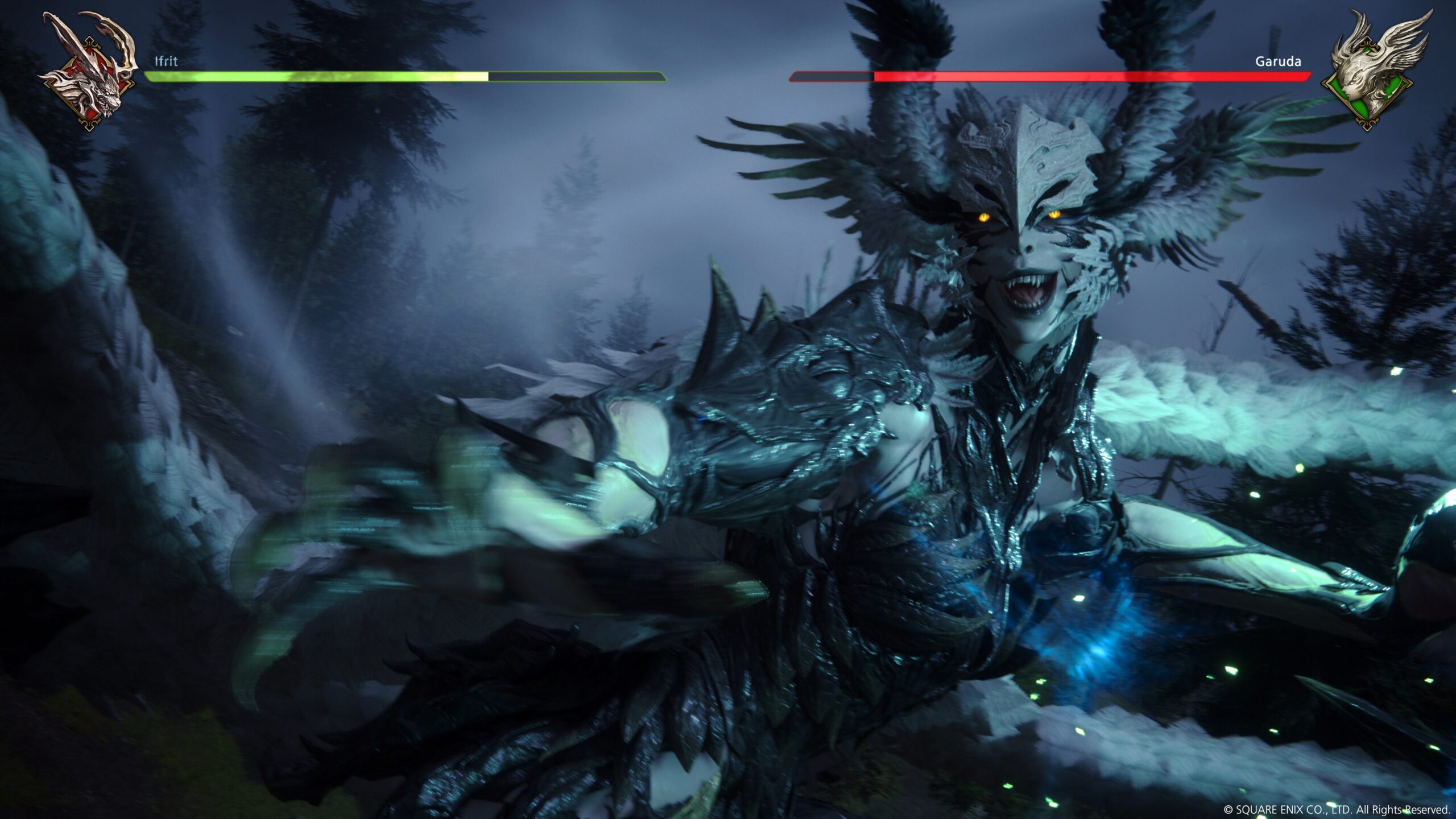
And if that holds true for Miss Harman, why not Mr. Kupka as well? Perhaps both characters were selected for a more formal reveal this month because this is the developers’ way of saying, “look, you won’t be seeing as many knights in shining armor coming to Clive’s side. This is a dark tale, and even his allies will shoulder some grim burdens and gritty actions.”
Or not. It’s impossible to say right now, but that’s my read on the matter. Before we move on, however, there is a sexual elephant in the room that must be addressed.
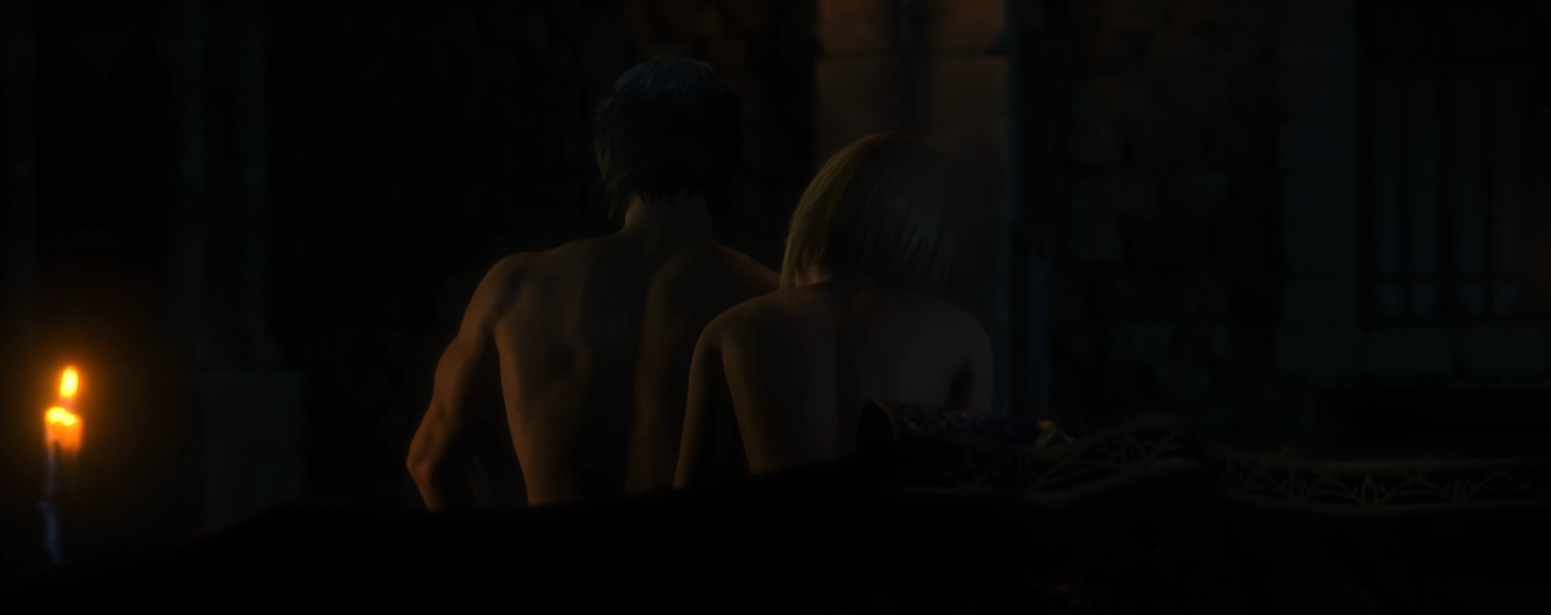
Is that Benedikta? I think so. I could be mistaken. There’s a bias here since Benedikta is pretty much the only woman we’ve seen from the game thus far. But it really does look like her. So, who’s the dude? Some have speculated it’s Clive. I’m thinking it’s his father instead. Why? Because having the elite intelligencer from Waloed secretly shack up with the Archduke of Rosaria is spicy.
We like spicy.
Rulers of the Realms
This feels like a proper enough time to bring up the Archduke of Rosaria. His name is… wait. Do we know his name? It occurs to me that I don’t think we know his name. We still don’t know the guy’s name. I want, with all my heart, to call him Regis. But we’re not going to call him Regis.
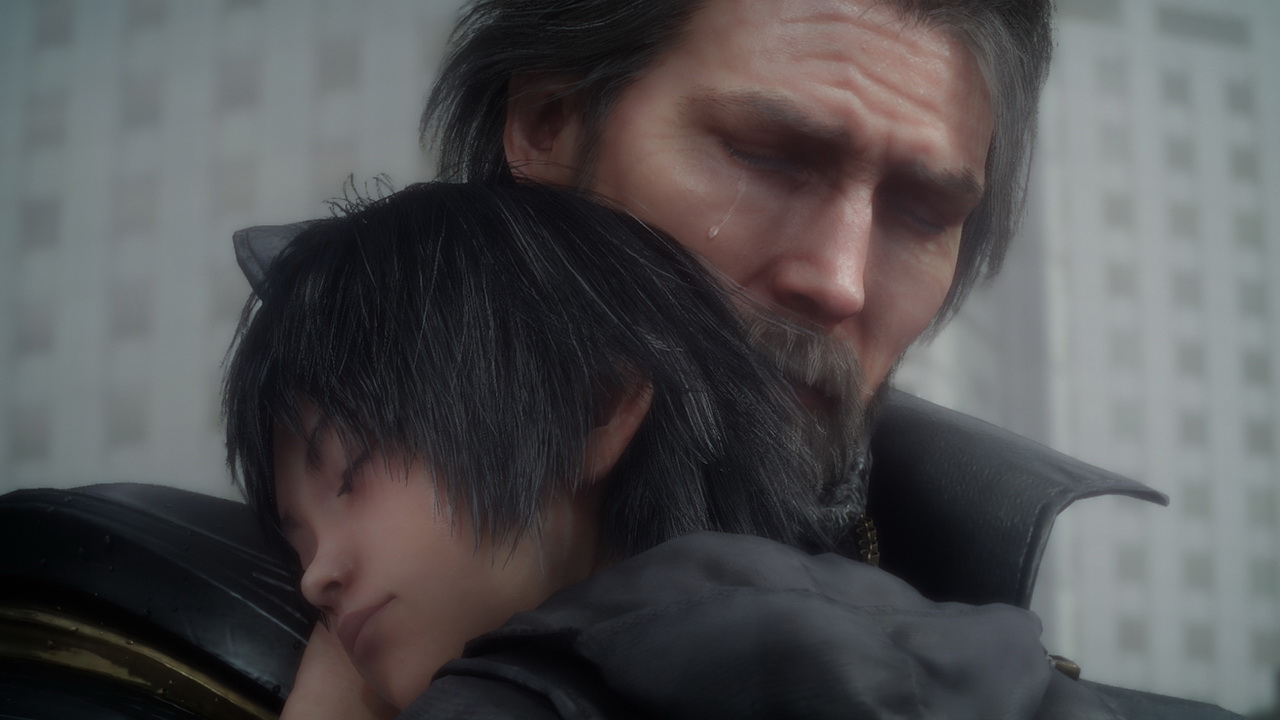
I guess we’ve got no choice but to call him “Archduke of Rosaria” until further notice. But hey, that’s fine. We don’t know any of the other Valisthean rulers’ names yet, either, unless we’re counting Hugo in the Dhalmekian Republic, which, I mean, OK, yes, we can do that. There’s bound to be more to Dhalmekian leadership than just Hugo, however; in the 2020 trailer, we saw a middle-aged man who resurfaced in the new one only to be pushed down to his chair during Hugo’s sequence like some kind of spiky-headed jerk being ordered by Cid Highwind to sit down and drink his tea.
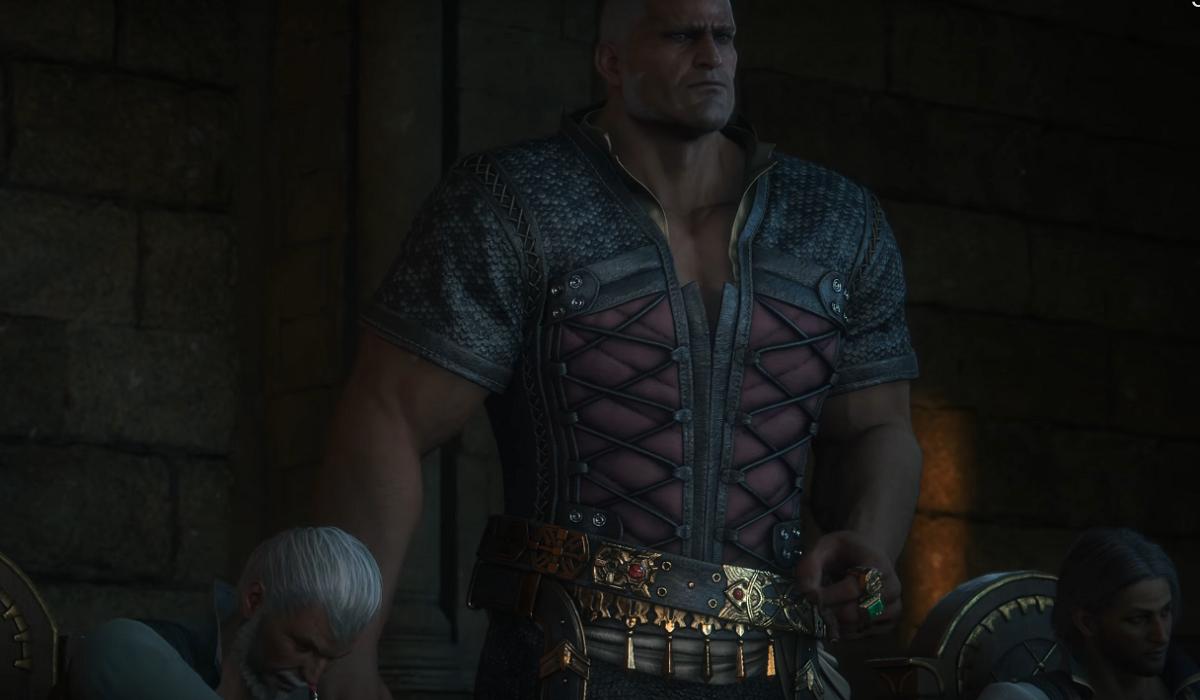
Let’s break down what we know about each of Valisthea’s six governmental bodies. Naturally, this means me yanking official descriptions from the Final Fantasy XVI website again. But first, an overview of the entire landmass.
Valisthea
The land of Valisthea is studded with Mothercrystals—glittering mountains of crystal that tower over the realms around them, blessing them with aether. For generations, people have flocked to these beacons to take advantage of their blessing, using the aether to conjure magicks that let them live lives of comfort and plenty. Great powers have grown up around each Mothercrystal, and an uneasy peace has long reigned between them. Yet now the peace falters as the spread of the Blight threatens to destroy their dominions.
Studded with Mothercrystals, eh? I love what the writers have done with Final Fantasy‘s ever-classical thematic backbone — the crystals. The peoples of Valisthea have gathered and formed nations around each Mothercrystal, and they doubtless revere these power sources as the most important aspect of everyday life.
As for the Blight, that’s another classic trope, albeit in this case more for the fantasy genre at large. Gaming enthusiasts might think of Dragon Age first, though there are plenty of other prime examples within the medium, to say nothing of literature and televised fare. For Final Fantasy, the closest analog I can picture offhand would be FFXV‘s Starscourge, though I have utmost faith XVI‘s Blight will be more than just cool lore; it’ll actually get the full narrative attention it warrants.
Do you recall the way the first trailer ended? A man with a sinister voice proclaimed that “the legacy of the crystals has shaped our history for long enough.” It sounded like a threat. It sounded like the kind of Final Fantasy antagonist who seeks to unshackle perceived chains of fate in favor of more pronounced free will, even at the cost of chaos and widespread destruction. We’ve seen this sort of villain in many works of fiction, including a handful of Final Fantasy characters such as FFXII‘s Vayne Solidor. I like it.
Of course, I might be misreading the room. Or it could be a misdirection. But my best guess at this time is that at least one of the principal forces of “evil” will be a guy who resents the establishment, views the Mothercrystals as a crutch, maybe lost some loved ones courtesy of the Eikons, and wants to see what will happen if the strong few survive a catastrophe that breaks destiny’s bindings.
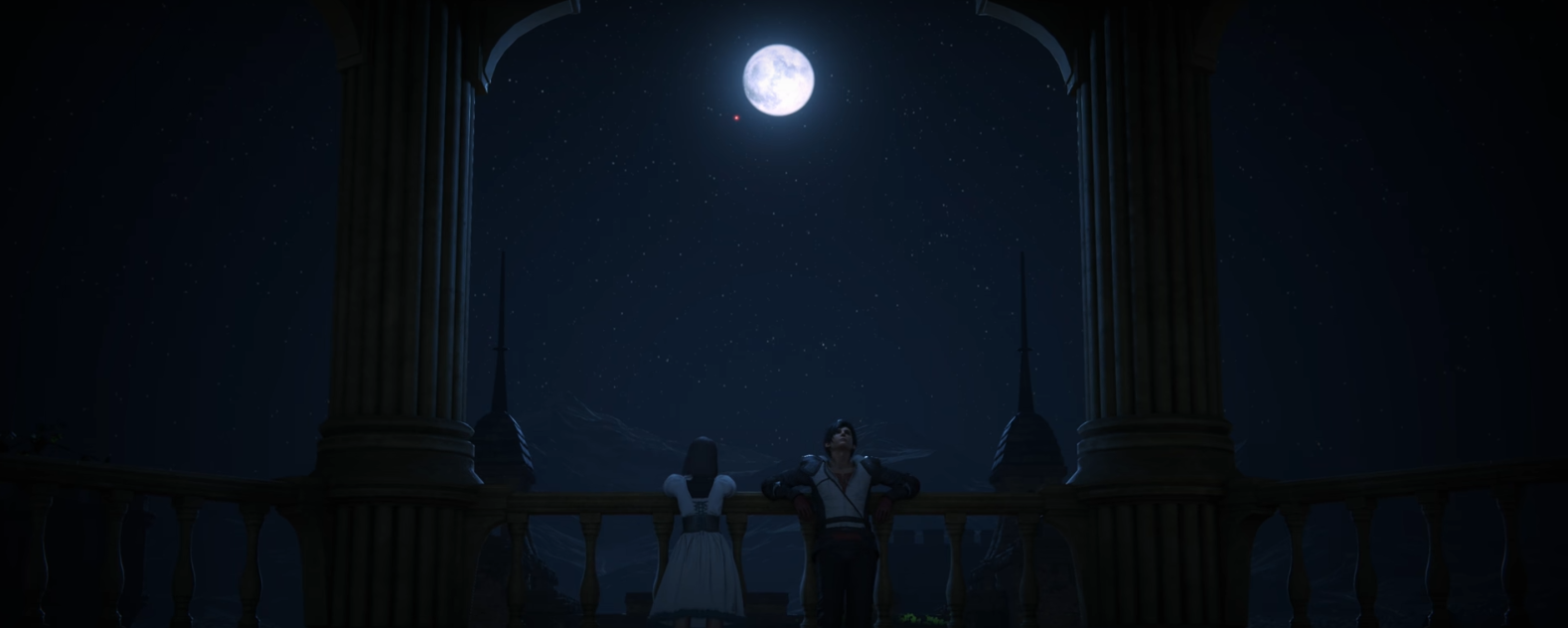
The Grand Duchy of Rosaria
Long ago, a group of small independent provinces in western Valisthea found strength in unity, and formed the Grand Duchy of Rosaria. After years of relative prosperity, the duchy now finds itself threatened by the spread of the Blight—a threat that, left unchecked, would doubtless usher the realm to ruin. Rosaria draws its aether from Drake’s Breath, a Mothercrystal situated on a volcanic island off the coast. The Dominant of the Phoenix, Eikon of Fire, is enthroned as Archduke when they come of age.
Our starting place, if all evidence thus far is to be believed, the Grand Duchy of Rosaria seems to have the most immediate issue with the realm-ravaging Blight. Back in 2020, we saw a young-era Clive fighting in a foggy and somewhat swamp-like area, and it’s got me wondering if the opening “stage” of the game pits the First Shield of Rosaria and his soldierly allies against Blight-spawned monsters of mayhem.
Regardless, it’s a problem. But, as we know from both trailers, Rosaria’s got a potentially even bigger problem. It’s invaded by imperial troops presumably quite early on in FFXVI‘s story, which leads to the Archduke’s demise, Clive’s younger brother Joshua (who is next in line to become Archduke) morphing into Phoenix, and — given how tragically the scenes are set, and Clive’s quest for revenge later on — evidently ends with Joshua’s death or near enough to it.
Who would be so rude?
The Holy Empire of Sanbreque
Sanbreque is the largest theocratic force in Valisthea. The Empire’s holy capital Oriflamme is built around Drake’s Head, the Mothercrystal that blesses the surrounding provinces with abundant aether. The people happily take advantage of this, living in comfort and security under the watchful gaze of the Holy Emperor, whom they worship as the living incarnation of the one true deity. The Dominant of (censored) serves as the empire’s champion, taking to the field in times of war to rout its enemies.
Yeah, we still don’t know who Sanbreque’s leading Dominant happens to be. But their flag’s got dragons on it. And we’ve seen Bahamut in June’s trailer. So, I’m calling it: Bahamut.
As best I can tell, it’s the Holy Empire that invades Rosaria. The Holy Empire’s got a lot going on, too. We’ve heard the words of what Square seems to want us to think is Sanbreque’s ruler, and they are spoken to the tune of people dying and houses exploding and other jolly bits.
“There will be losses, it is true. Yet for every citizen who falls, another can be bred. For every home that burns, another can be built. The Empire will live on.”
Three things. First, this guy’s a dick (the one lounging on the right in the image below here). Second, we see Bahamut fighting Odin when he starts talking during the trailer. Third, I don’t think he’s the actual leader of Sanbreque. Just the guy who gets to pretend he is and makes everyone play along.
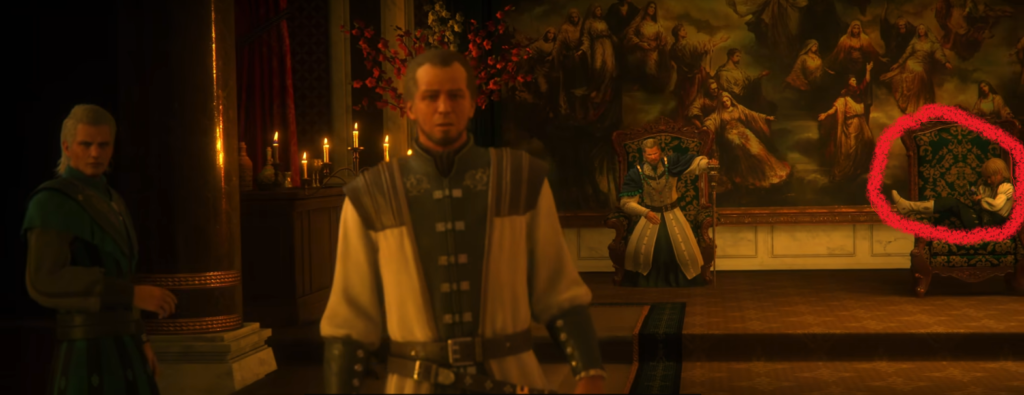
If the dick who intends to plunge Valisthea into strife for his own selfish gains gets to sit on a nice throne, why does he bother sharing the floor with some kid who is clearly bored out of his skull? Probably, it’s because he usurped the power to speak on the kid’s behalf, and everyone loves the kid because their religion tells them to, so our vicious dick man’s word must be obeyed.
Before we move on, this guy’s Bahamut, right?
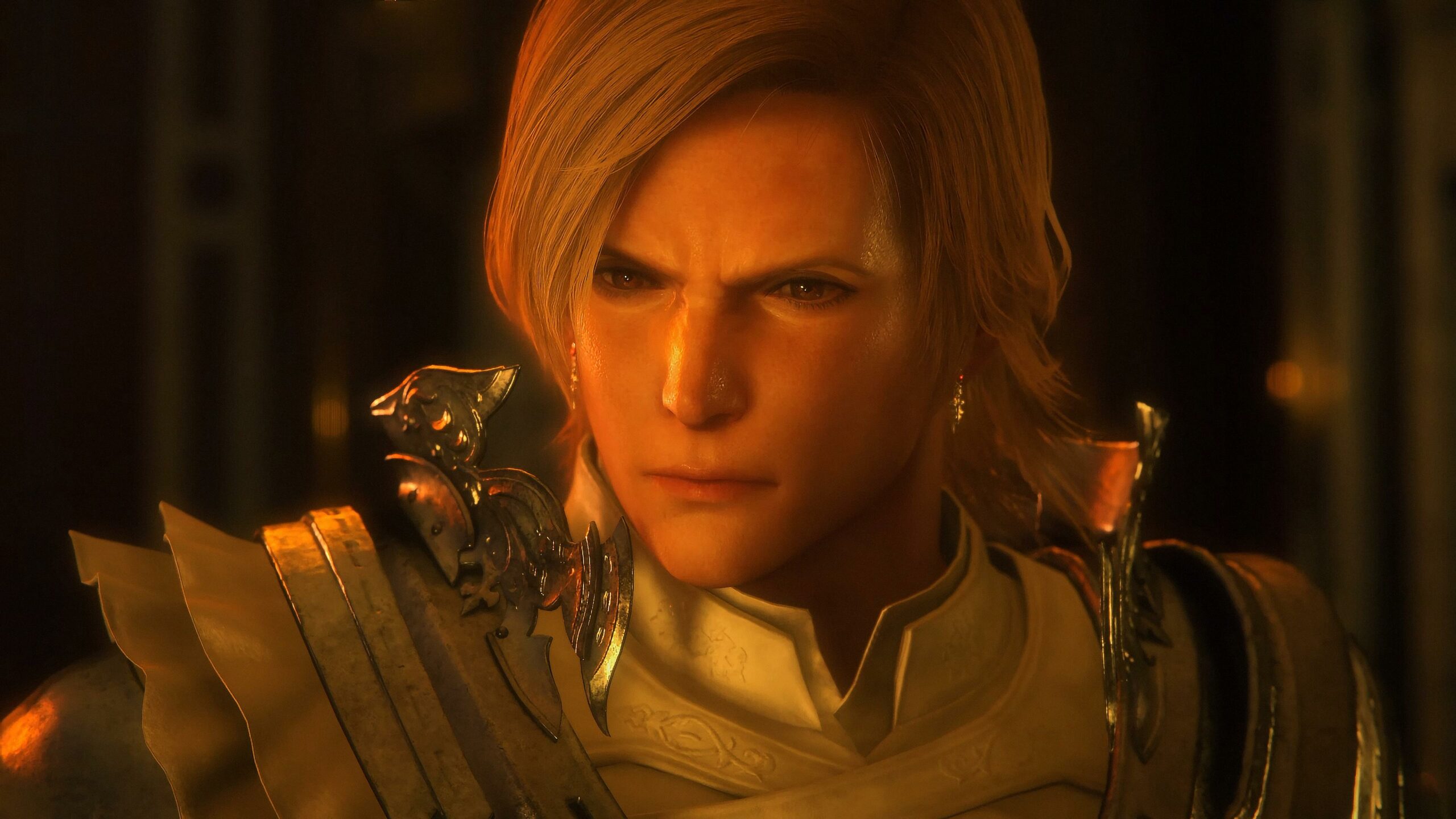
The Kingdom of Waloed
Waloed claims the entirety of Ash, the eastern half of Valisthea, as its dominion. The kingdom’s control of the continent has oft been tested by the orcs and other beastmen who make their home there, but the current ruler of the realm—Dominant of (censored)—has succeeded in quelling their rebellions. Using the power of the kingdom’s Mothercrystal, Drake’s Spine, this new king has built up a mighty army, with which he now seeks to test the borders of his neighbors.
Waloed’s Dominant has also been redacted. That’s how much Yoshida and his team love us. They don’t want us to know. But they do want us to yearn.
We know Waloed through Benedikta, but Benedikta is Garuda, and she leads a crew of spies on Waloed’s behalf. The country’s flag, however, has a horse on it and screams “Odin.” (The flag, to be clear, does not scream the word Odin. Only in a metaphorical sense.) I don’t think it’s a stretch to say Waloed’s Eikon is thus Odin, and that it’s ruled by Odin’s Dominant, but let’s leave a little wiggle room in case I’m wrong.
Ash is the entire eastern half of Valisthea. That makes it well over a third of the total mass of this twin-continental locale, gifting the Waloedian people with a huge expanse of land. On the other hand, they’ve got to deal with “orcs and other beastmen,” which sounds cool from a gameplay perspective but probably not so cool to the fictional characters who reside there.
The Dhalmekian Republic
The Dhalmekian Republic is made up of five states, from which the members of its ruling parliament are drawn. Its Mothercrystal, Drake’s Fang, is half-hidden in the heart of a mountain range—the republic’s control over it, and its aether, securing the obedience of the large part of southern Valisthea. The Dominant of Titan, Eikon of Earth, is installed as a special advisor to parliament and has a significant say in its decision-making.
If memory serves, Square Enix totally censored Titan’s name until the recent trailer. That’s neat. Anyway, our present window into the Dhalmekian culture is Hugo, and I reckon that holds true in the game itself as well.
There’s not a lot that can be said here right now, except that I suspect one of the promotional screenshots illustrating Clive’s journey through the world is distinctly Dhalmekian in design.
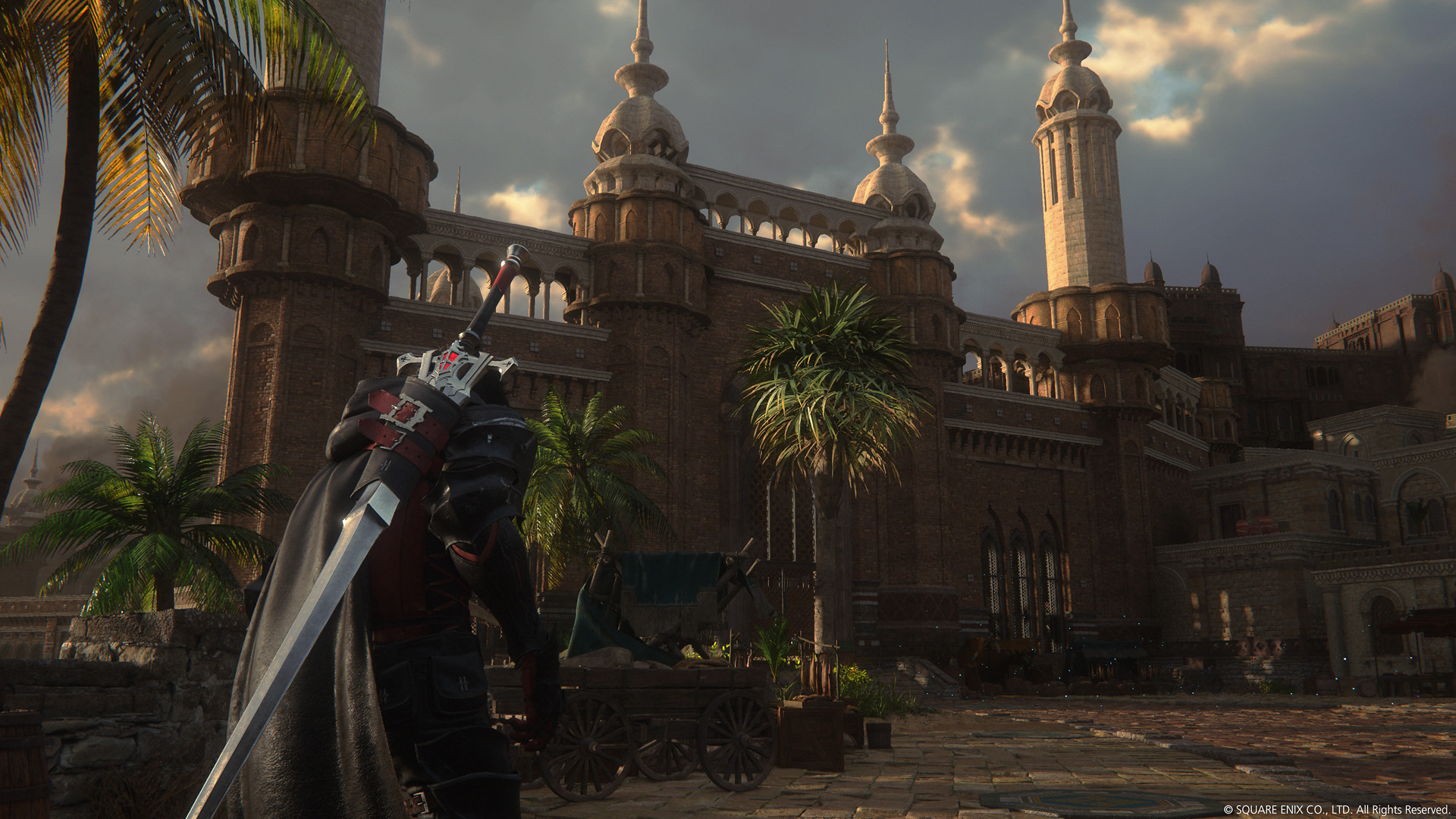
The Iron Kingdom and the Crystalline Dominion
We’re closing out our Valisthean tour with a one-two punch because we know so little about these places that they’re stuck in the same section together until further notice.
A small group of islands off the coast of Storm, the western half of Valisthea’s twin realms. Here the Crystalline Orthodox, an extreme faith that worships crystals, reigns supreme. The Iron Kingdom controls Drake’s Breath, the Mothercrystal that sits at the heart of one of their islands—long a source of contention with neighboring Rosaria. Isolated and aloof from the mainland nations, the Ironblood speak their own language. Orthodox doctrine judges Dominants to be unholy abominations, and any unlucky enough to be born on the islands are executed.
The Crystalline Dominion sits at the heart of Valisthea, built around the tallest of all the Mothercrystals, Drake’s Tail. Many bloody battles were fought for control of this small plot of land due to its strategic importance, till the warring realms finally agreed to an armistice. As part of the peace treaty, the islands around Drake’s Tail became an autonomous dominion led by a council of representatives from the surrounding nations—each realm enjoying equal claim to the Mothercrystal’s blessing. No Dominant makes their home there.
My gut says the Crystalline Dominion is invaded by the Holy Empire of Sanbreque. Either that, or the place isn’t so multinational as it sounds, and there’s some bad business going on behind the scenes. As for the Iron Kingdom… hey, now. Wait a minute.
The Iron Kingdom controls Drake’s Breath? But that’s Rosaria’s source of aether. All right, hear me out. Suppose the Holy Empire requests and receives safe passage through the Kingdom’s islands in order to launch a surprise assault on Rosaria. What would the Iron Kingdom have against such a feat? If they’re tricked into believing (or, less likely, it’s genuinely true) that Sanbreque will leave Drake’s Breath alone, it sounds like a win-win situation.
Concerning the execution of Dominants… uh, ouch. I think ouch is all we can reasonably say at this point. But it’s a pronounced ouch. A sharp ouch.
The Sanbrueqian Museum of Fine Speculation
We’ll be back next week with one more chapter in this attempt to understand the pending behemoth that is Final Fantasy XVI. Our last stretch of coverage will revolve around combat, exploration, and other gameplay-related matters.
But before we go, take a look at the painting in the Holy Empire’s throne room. This stuff has often had direct implications for the stories being told in past Final Fantasy titles, and there’s no way Square poured this much effort into the artwork here for no reason.

Is this pure imperial propaganda? Or is there, in truth, some hint behind its mystery that will become clearer when Final Fantasy XVI is finally in our hands? Or maybe, just maybe, several people felt like raising their arms one day and a court painter decided to document the deed.
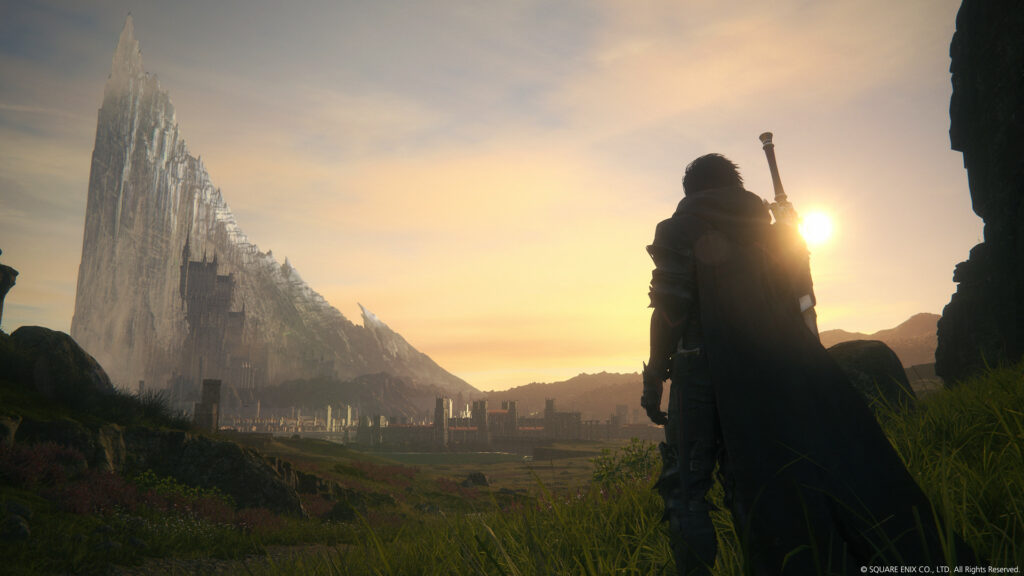
Recent Comments